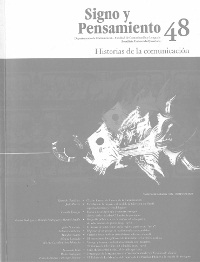Abstract
The paper deals with the relation between photojournalism and the modernization ofBrazilian's press over the middle of the 20th Century. In this process, known as "reforms", Río de Janeiro's newspapers suffer deep changes in language, such as the adaptation to organizational norms, writing and digging techniques used by the US press, and innovations in language inspired by the modernist movement. This artide traces a short description of the reforms in three newspapers (Diário Carioca, Última Hora , andJornal do Brasil) and discusses the process of changes in journalistic routines and the deontological codes of the profession, seeking dues in order [O understand why the formation la the new generation of pho[Ographic reporters isn't related with, as happened with text jou rnalists, specific formation such as training done in the newspapers, creation of university courses and the requirement of university diploma.This journal is registered under a Creative Commons Attribution 4.0 International Public License. Thus, this work may be reproduced, distributed, and publicly shared in digital format, as long as the names of the authors and Pontificia Universidad Javeriana are acknowledged. Others are allowed to quote, adapt, transform, auto-archive, republish, and create based on this material, for any purpose (even commercial ones), provided the authorship is duly acknowledged, a link to the original work is provided, and it is specified if changes have been made. Pontificia Universidad Javeriana does not hold the rights of published works and the authors are solely responsible for the contents of their works; they keep the moral, intellectual, privacy, and publicity rights.
Approving the intervention of the work (review, copy-editing, translation, layout) and the following outreach, are granted through an use license and not through an assignment of rights. This means the journal and Pontificia Universidad Javeriana cannot be held responsible for any ethical malpractice by the authors. As a consequence of the protection granted by the use license, the journal is not required to publish recantations or modify information already published, unless the errata stems from the editorial management process. Publishing contents in this journal does not generate royalties for contributors.


